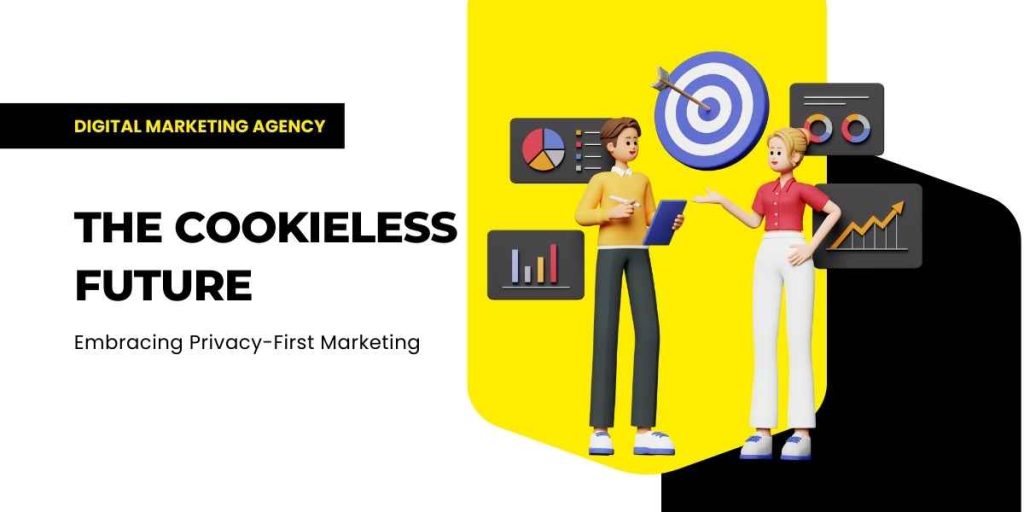How Blockchain Technology is Shaping Digital Marketing The digital marketing landscape is not steady, it is constantly evolving and changing. The new technologies are redefining how businesses connect with their...
Read More
The digital advertising space is undergoing a phenomenal shift, prioritizing user privacy more. For decades, third-party cookies have been the cornerstone of targeted advertising, enabling brands to track changing user behavior, deliver personalized ads, and measure campaign success. However, with increasing privacy concerns, regulatory changes, and technological advancements, it is safe to say that businesses are heading toward a cookieless future. This transition presents a unique challenge for marketers as it’s an opportunity to embrace privacy-first marketing, fostering consumer trust while developing innovative strategies.
This blog explores the possible implications of a cookieless future and how brands can adapt accordingly to thrive in this privacy-centric new era.
In simple terms, the cookieless future means creating a digital environment where third-party cookies are no longer relevant as small pieces of data that track users across websites. This change is driven by two major factors:
Together, these changes signal the end of the intrusive behavior of marketers while tracking user behavior. This also paves the way for marketing practices that prioritize user privacy.
The cookieless future requires marketers to prioritize privacy-first marketing while respecting user privacy and maintaining effectiveness in targeting and engagement. Here’s why this shift is essential for the future of advertising:
Adapting to the cookieless future requires a company to shift from dependency on third-party data to leveraging ethical, innovative, and privacy-compliant methods. Here are six actionable strategies brands can adapt:
First-party data refers to information brands collect directly from their audience through active interactions on your owned channels, such as websites, apps, or emails. This data is more reliable and aligns perfectly with all privacy standards.
How to Utilize First-Party Data:
Building a direct relationship with customers ensures consistent access to valuable data while being transparent and without relying on external tracking.
Unlike first-party data which the brand collects from active marketing channels, zero-party data is provided by customers to the brand voluntarily. This includes information shared through various surveys, quizzes, or preference settings.
Benefits of Zero-Party Data
For example, an e-commerce store could use a quiz to recommend products based on a user’s preferred style creating a highly personalized shopping experience.
Contextual advertising targets users based on the content they are browsing and viewing, rather than their online history. It’s a cookieless, privacy-safe approach to delivering relevant ads to customers.
Example in Practice:
Imagine a user reading a blog about healthy eating habits. An ad for organic meal kits displayed on the same page resonates with their current interests without tracking their past behavior.
Contextual advertising method respects users’ privacy while maintaining ad relevance.
Emerging technologies are designed in a way that enables marketers to craft effective marketing strategies without compromising user privacy. Some of these include:
By integrating these preserving tools, brands can maintain data-driven marketing strategies in a cookieless world while respecting boundaries.
In the age of privacy awareness among users, clear communication about data collection practices is vital for brands to be successful.
Best Practices:
Transparency fosters trust, and makes you an authentic option, encouraging users to share data willingly.
The cookieless future challenges traditional methods of analyzing and measuring campaign success. However, some innovative solutions are emerging that make user behavior analysis more precise, such as:
Instead of relying solely on third-party tracking, shift your focus to innovative actionable insights from first-party data.
Apple, a popular smartphone brand has positioned itself as a leader in privacy-first marketing with its innovative feature App Tracking Transparency (ATT). By providing users control over app tracking, Apple has not only complied with privacy regulations but also strengthened its brand reputation in a competitive market. This step from a leading brand forced advertisers to rethink their strategies while enhancing consumer trust in Apple’s ecosystem.
The cookieless future is not the end of digital marketing but a wake-up call to adapt and innovate according to evolving technologies and time. By embracing privacy-first strategies, brands can maintain relevance and transparency while respecting consumer privacy.
Companies should focus on ethical data practices, leverage first- and zero-party data, and adopt cutting-edge technologies to navigate this new era successfully. As privacy becomes a cornerstone for tailoring modern marketing strategies, brands that prioritize customer trust and transparency will thrive in the competitive market.
How Blockchain Technology is Shaping Digital Marketing The digital marketing landscape is not steady, it is constantly evolving and changing. The new technologies are redefining how businesses connect with their...
Read MoreBoosting SEO with Schema Markup: A Beginner’s Guide In the competitive business world, small and medium-sized businesses (SMBs) must manage customer relationships effectively to ensure sustainable growth and drive profits....
Read MoreWhy Gamification is the Next Big Thing in Customer Engagement In today’s digital space, grabbing customer’s attention and holding it is a challenge for businesses. Changing priorities of customers encourages...
Read More